Date 8 June 1982 | ||
 | ||
56 killed
150 wounded
1 landing ship lost
1 LCU sunk
1 landing ship badly damaged
1 frigate damaged 3 killed
3 aircraft lost Result British ground attack on Stanley delayed by two days Location Falkland Islands (Islas Malvinas) Similar Falklands War, Battle of Goose Green, Battle of Mount Longdon, Assault on Mount Kent - Falk, Battle of Mount Harriet | ||
The Bluff Cove Air Attacks occurred 8 June 1982, during the Falklands War. British troop transport ships were bombed by the Argentine Air Force (FAA) whilst unloading, with significant damage and casualties.
Contents

Background
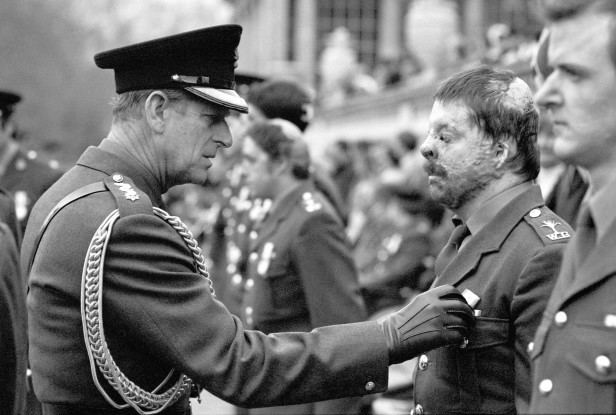
By 1 June, British forces on the Falkland Islands were bolstered by the arrival of 5,000 new troops of the 5th Infantry Brigade. Major General Jeremy Moore now had sufficient force to start planning a full-scale assault on Port Stanley.
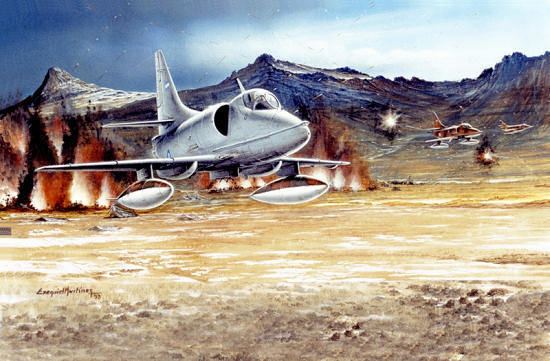
Advance parties of the 2nd Battalion, Parachute Regiment moved forward and occupied Fitzroy and Bluff Cove, when it was discovered to be clear of Argentine forces. Units of the Welsh Guards and Scots Guards were sent in to support them. After the sinking of the transport Atlantic Conveyor there was only one British troop-carrying helicopter available, an RAF CH-47 Chinook, the Bravo November. Therefore, supplies and reinforcements would have to be transported by sea.
Air strikes
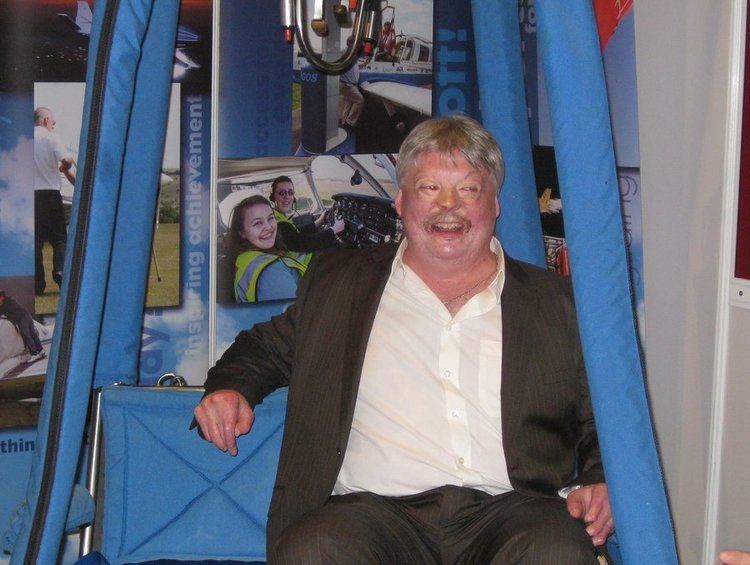
While unloading on 8 June, the British ships were attacked by two waves of A-4 Skyhawks from the Argentine Air Force's 5th Air Brigade, each of them loaded with three 500 lb retarding tail bombs of Spanish design. The fighters departed from Rio Gallegos airbase, which at the time was monitored by the nuclear submarine HMS Splendid. The first package, originally made of eight aircraft, was reduced to five when three Skyhawks returned to base due to refuelling problems.
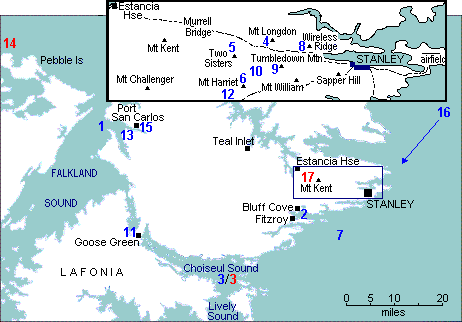
The nuclear submarine HMS Valiant, on picket duty off Rio Grande, was able to track six Dagger fighters taking off from the airbase there for a complementary mission and sent an early warning signal, but the report from the submarine failed to reach the British forces at Bluff Cove. Another four Mirages carried out a decoy mission over the north of the islands, while the Argentine destroyer ARA Santísima Trinidad broadcast interference signals to jam the frequencies used by the Royal Navy's air controllers directing the Sea Harrier operations.
First strike
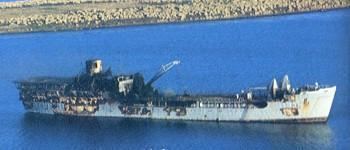
At approximately 14:00 local time the ships RFA Sir Tristram and RFA Sir Galahad were badly damaged by five A-4Bs of Grupo 5. Three A-4s targeted Sir Galahad, which was hit by three bombs from First Lieutenant Carlos Cachón. The second Skyhawk was unable to drop its bombs, and the third overshot the British ship.
The remaining two aircraft attacked Sir Tristram, which was struck by two bombs released by package leader Lieutenant Daniel Gálvez; the bombs of the last A-4 fell short. The explosions and subsequent fires killed 48 men aboard Sir Galahad and two crew members from Sir Tristram.
Second strike
At 16:50 a second wave, composed by four A-4Bs of Grupo 5 hit and sank a Landing Craft Utility from HMS Fearless in Choiseul Sound. The landing barge was ferrying the vehicles of the 5th Brigade's headquarters from Darwin to Bluff Cove. Six Royal Marines went down with the vessel. However, the Sea Harrier combat air patrol was already on scene and responded; three Skyhawks were shot down and their pilots, First Lieutenant Danilo Bolzan, Lieutenant Juan Arrarás, and Ensign Alfredo Vazquez, were killed.
Bolzan's aircraft was shot down by Lieutenant David Smith, while the remaining Skyhawks fell victims to Flight Lieutenant David Morgan. The fourth aircraft suffered combat damage and lost a large amount of fuel, but returned to the mainland assisted by a KC-130 tanker. A third wave, by A-4Cs of Grupo 4, arrived minutes later and struck ground targets without visible success.
Attack on HMS Plymouth
In a separate incident, the frigate HMS Plymouth endured the sudden attack of the six Daggers from Rio Grande, which struck her with four 1,000-pound bombs. The warship sustained severe damage, and five crewmen were injured. Although all the bombs were duds, the attack caused the explosion of at least one depth charge on her flight deck.
Aftermath
A total of 56 British servicemen were killed, and 150 wounded. BBC television cameras recorded images of Royal Navy helicopters hovering in thick smoke to winch survivors from the burning landing ships. These images were seen around the world. However, General Mario Menendez, commander of Argentine forces on the islands, was told that hundreds of men had been killed. He expected a drop in British morale, and their advance to slacken. Sir Galahad was damaged beyond repair, but her sister ship survived to be re-built post-war. American author Robert Bolia blames the disaster to the use of large LST ships instead of LCUs and other small vessels.
Brigadier Julian Thompson;
[5 Brigade] actually hadn't seen the Argentine Air Force work, 'cause for the five days they'd been there, the bad weather had kept the Argentine Air Force away; so they hadn't seen how deadly those guys could be. I can tell you, if I'd have been on board that ship I would have swam ashore rather than stay there
Among the wounded was Simon Weston, who later featured in a BBC documentary showing his treatment for the appalling injuries he received. Weston endured 75 operations in 22 years, after 25% of his skin suffered third degree burns. In a subsequent documentary, filmed in Argentina, he met the pilot who bombed his ship, Carlos Cachón, then retired with the rank of Captain. After a later visit of Cachón and his family to Weston's home in Liverpool, they have become great friends.
Carlos Cachón was born near Balcarce and raised in Mar del Plata, where he currently lives. He is the chief of the security staff in the local offices of the Argentina National Bank. Cachón was awarded the honorific title of "Illustrious Citizen" by the City Council of Mar del Plata on 25 February 2010.
After the war, a memorial for the British soldiers killed in the attack was erected at Fitzroy. On 8 June 2007, Welsh Guards veterans of the Falklands War held a memorial for the Welsh Guards killed on board Sir Galahad.
